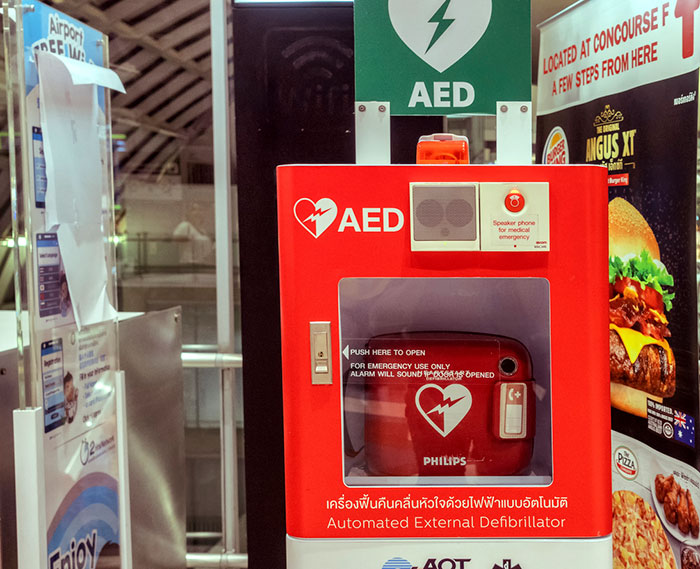Did you know, around 30,000 Australians suffer a sudden cardiac arrest each year? Without immediate CPR and defibrillation, there is zero chance of survival. Automated External Defibrillators (AEDs) are life-saving devices that play a crucial role in the early response to sudden cardiac arrest. These portable machines are designed to provide easy-to-use defibrillation shocks to restore a regular heart rhythm, essentially saving a life. However, like any medical device, regular maintenance and care are vital to ensure its reliability and effectiveness. Read on to find out more.
How to Maintain an AED Defibrillator
Here are some tips and best practices for maintaining your AED machine:
- Read the manufacturer’s instructions – Make sure you familiarise yourself with the manufacturer’s guidelines and recommendations for maintenance. Each AED model may have specific instructions, so it’s crucial to follow them accurately.
- Conduct regular visual inspections – Inspecting your defibrillator allows you to identify any physical damage, loose connections, or signs of wear. Ensure that the device is stored in a clean and dry environment.
- Check the battery status – The battery is a critical component of every AED device. Check the battery indicator regularly to ensure that it is adequately charged. Follow the manufacturer’s instructions regarding battery replacement and expiration dates. Some AEDs have rechargeable batteries that require periodic recharging or replacement after a specified period.
- Verify electrode pad expiration – AED electrode pads have expiration dates, typically indicated on the packaging. Make it a habit to check the expiration dates and replace the pads before they expire. Properly functioning electrode pads are crucial for effective defibrillation.
- Perform self-tests – Most AEDs have a self-test feature that checks the internal components, battery, and electrode pads. Initiate the self-test as recommended by the instruction manual. Pay attention to any error messages or warnings displayed during the self-test and follow the instructions provided.
- Train and educate staff – Provide proper training to the individuals responsible for maintaining and using the AED. Ensure they are aware of the maintenance procedures, including battery replacement, electrode pad expiration, and self-test routines.
- Stay up to date – Keep track of any recalls, software updates, or new guidelines issued by the AED manufacturer or relevant regulatory authorities. Regularly review and implement any necessary updates or changes to ensure your AED defibrillator remains compliant and effective.
Proper Maintenance Alone is Not Enough
To ensure you’re fully prepared to handle an emergency situation, it is equally important to have a well-defined emergency response plan, including trained personnel who can effectively operate the AED machine if/when required. Regular maintenance, combined with proper training and preparedness, can significantly improve the chances of a successful outcome in a life-threatening cardiac arrest situation.
Looking for a Defibrillator for Sale?
Safety Dave is your one-stop safety shop, with everything you need to optimise safety in your home or workplace. We carry the highest quality products that have been stringently tested to comply with all necessary standards and guidelines. From reversing cameras and TPMS, to fire safety equipment and first aid kits, you can expect premium safety products at affordable prices. Call us to order on 1800 072 338 or enquire online now.


